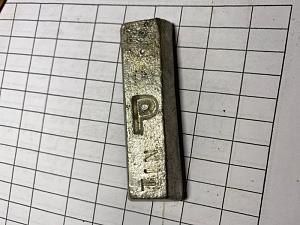Was given a good supply of “lead” ingots from an old shooter friends estate. My understanding is They are a mix of pure lead ( pretty easy to identify,) pure tin and a hard alloy with high tin content. They are a mixture of ingot mold types but not segregated by ingot type. Some ingots with a P have “tin” stamped into the top. Others “look” very much like the “tin” ingots but without the “tin” stamped in. Is there a good way to identify between pure tin ingots and high tin alloy ingots?
Here is one of the small “tin” Ingots. There are many that look the same but without the word.


|
   
   
|


|



 Reply With Quote
Reply With Quote



















